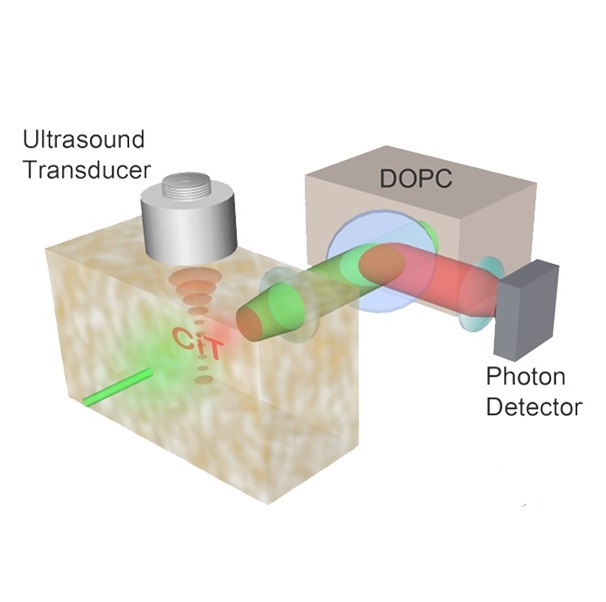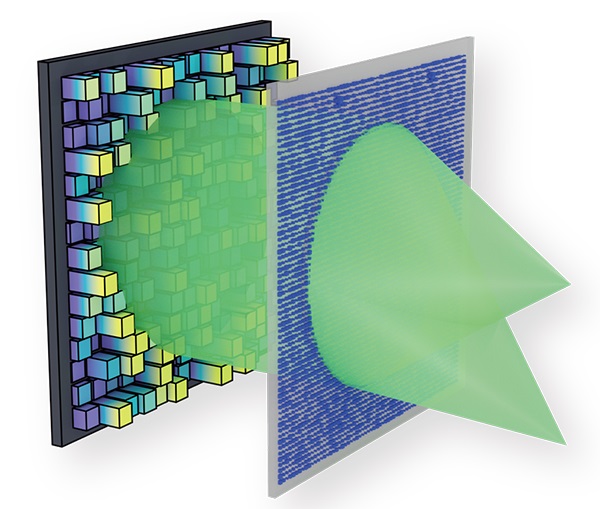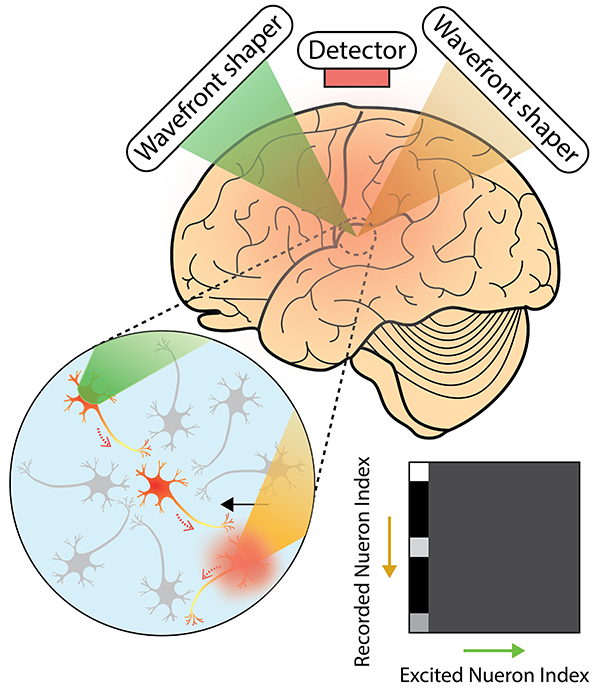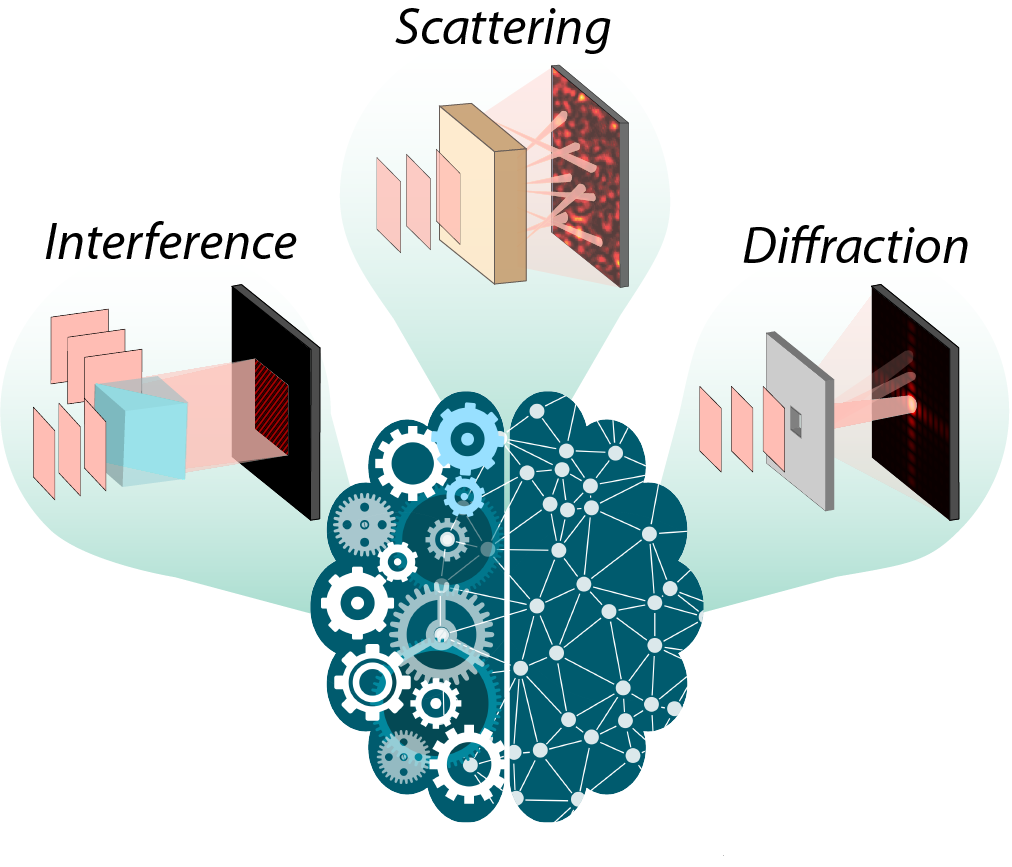Research
Our group will explore the interdisciplinary research area of optics, biomedicine, neuroscience, and nanophotonics. We focus on the development of novel tools that combine optics, acoustics, and nanophotonics to tackle problems in biology and medicine.
-

Deep Tissue Imaging
Solving the problem of light scattering in biological tissues is a central goal in biomedical imaging. To date, the accessible depth of optical methods is limited to the superficial layer of biological tissues (approximately, 1 mm). We aim to increase the accessible depth through approaches based on wavefront manipulation and ultrasound-light interaction.
-

Advanced Light Manipulation
For more than 50 years, the design paradigm of optical components has been dictated by a set of principles such as the basic rules of refraction and diffraction. We aim to combine the concepts emerged from two subfields of optics – complex wavefront shaping and metasurface – to challenge the conventional paradigm, and thereby unlock the optical space that is inaccessible with conventional optics.
-

Optical Neuromodulation
Adult brain is composed more than 80 billion neurons and 100 trillion synapses (i.e. a junction between neurons). Revealing such complex connection represents an indispensable foundation to understand how our brain functions and to develop a treatment to brain diseases. Unlike conventional approaches in neuroscience, our approach, based on deep tissue light focusing, aims to interrogate the neuronal network in non-invasive and spatially-resolved (in the scale of a few tens of micrometers) manner.
-

Physics-based Machine Learning
We exploit machine learning techniques to tackle a variety of bioimaging problems.
1) Physics-based computational approach
We solve the problem of deep tissue imaging based on an innovative computational approach with a physics-integrated model.
2) Image reconstruction
When implementing biophotonic imaging applications, we often face the problem of missing information. In machine learning-based image reconstruction, we recover missed high-resolution, phase, spectral information of biological objects, finally achieving single-shot 3-D & hyperspectral imaging.
3) Image classification
Image classification has been recognized as a vital tool for imaging-based healthcare applications. Machine learning techniques automate the classification of various cells and intracellular organelles so that high-throughput diagnostics can be possible. We make efforts to develope small form-factor healthcare device equipped with an optical imaging & classification system.